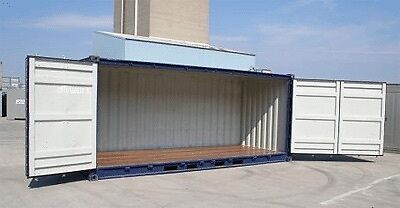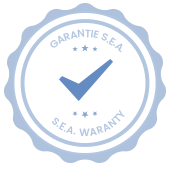Shipping containers have become an integral part of the logistics industry. But they didn’t even exist in their present form in the 1950s, when the industry started. Here, we will be exploring the fantastic history of shipping containers and the evolution they went through up until today.
The History of Shipping Containers
The concept of containers originated in 1766, when the Starvationer boat, designed by James Brindley began transporting coal in England from one mine to another. This boat consisted of ten spots which were used as coal containers.
Then in 1795, Benjamin Outram, an Englishman, invented the very first container used for transportation of coal. This was the start of container traffic. During this period containers were pulled by horses along rails, from the mines up to the canal. At the canal, the coal was transferred into a barge. After reaching its destination, the same process was used for transporting the material.
By the 1830s, in some continents, coal was being transported by rail. One rail car was capable of carrying four containers. At this time containers were made of wood. These containers were then loaded onto specially outfitted horse carriages.
In the 1840s, wooden boxes were still being used, but iron boxes and closed containers were being introduced for rail and highway transport. Before the start of World War II, shipping containers had begun to appear in their earliest forms in some European nations. By 1927, the trend started of packing passenger baggage in multiple containers during transit between Paris and London on luxury trains. By 1927 packing passengers’ baggage in multiple containers during rail trips between Paris and London had become the trend.
The Era Prior to the Introduction of Shipping Containers
For years, food, cotton, and other merchandise was transported via sea routes. These goods were kept in various warehouses at the ports before they were loaded onto the ships. The goods were stored in sacks, boxes, and barrels and then loaded manually onto the ships. This whole process was time consuming and required a large workforce to complete the work.
During the second industrial revolution, the absence of shipping standards turned into a real problem. For example, loading and unloading goods from off the ships and onto the trains was time consuming, often taking up to a week to complete. This resulted in a lot of delays and over-crowding at the ports.
Malcolm McLean and the Shipping Container
Malcolm McLean started a transport company in 1934 with a fleet of five trucks. By 1937, he realized that in transporting goods time and money was lost during loading/unloading and packing process, since it was all done manually by dock workers.
McLean pondered the idea of creating a trailer container with a standardized size that could easily be loaded onto ships in bulk. To implement his idea, he purchased a shipping company – The Pan-Atlantic Steamship Company. Later on, the name was changed to Sealand Industries.
At that time, McLean began testing prototypes of shipping containers – primitive models of the containers we today. However, these containers were around thirty-six feet long, unlike the forty foot and twenty foot containers used today. These containers were durable, easy to load, stackable, lockable and standardized – a huge improvement for the industry.
By 1956 McLean launched a tanker named Ideal X, which departed from New Jersey headed for Houston. Before even reaching its destination, they started getting orders! A secure (lockable) container that could transport goods for twenty-five percent less cost made the tanker an instant success.
In 1957 McLean launched Gateway City – the first ship designed in such a way that it could transport containers. The notable thing about its voyage from New Jersey to Miami was that the whole process of packing as well as the unloading of goods was carried out by only two dock workers at the amazing speed of thirty tons per hour.
Shipping Containers and their Standardization
McLean took out patents on the revolutionary corner pieces of the containers, which were a revolutionary part of the shipping container’s functionality, providing both stack-ability and strength.
In addition, a set of ISO standards was created for determining identifiers, classifications, dimensions, and terminology for the containers. Because of these standards, we now have containers in 40’ and 20’ sizes with standard volume being 20’ containers.
(with 20’ containers being the most common?)
On the Path toward Rapid Growth
Port associations became hurdles in the growth of container use in the transport industry. The association could see that the need for dockworkers was rapidly diminishing. There were strike actions during the 1970s.
However, as the use of containers made more sense economically, it was possible to provide union workers with severance pay. Once that became the norm the container business really began to boom.
Later on, McLean sold his company to one of his close acquaintances from years gone by, the head of the Reynolds Tobacco Company. After the acquisition, Reynolds Tobacco Company also purchased SL-7 ships to further advance their business.
The Advancement of Shipping Containers
The benefits of using shipping containers are well-illustrated by the fact that way back in 1956, the cost of loading goods was about $5.86/ton. But, with the advent of shipping containers, the cost dropped to $0.16/ton – about 90 percent less.
Similarly, prior to the use of shipping containers, loading goods onto ships took a lot of time – about an hour to load 1.3 tons. However, with increased use of shipping containers, the loading time was reduced to thirty tons per hour – a huge improvement.
Conclusion
As we can see, shipping containers and containers for sale have a long history and the gradual increase in their use helped fuel several improvements in the shipping industry. Shipping containers are now an integral part of shipping industry and the numbers keep growing at a rapid rate. If you also want to buy shipping containers, purchase used containers for sale or know more about used shipping container price then get in touch with us to discuss the details.


